#tubulidentata
Photo
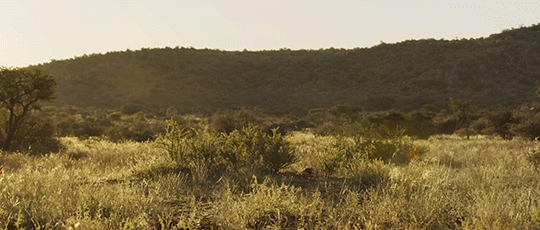
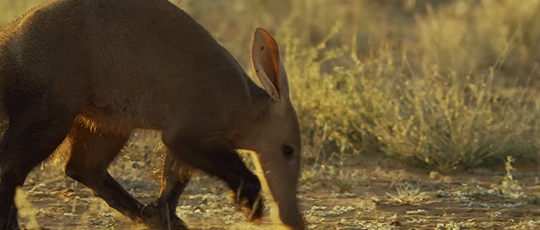





The world’s largest burrowing animal is the aardvark. It has an extremely acute sense of smell and powerful arms with shovel-like claws to dig down five to six meters.
David Attenborough | BBC Earth
#BBC Earth#aardvark#david attenborough#kalahari desert#mammalia#tubulidentata#orycteropodidae#insectivore
2K notes
·
View notes
Text
Uncharismatic Fact of the Day
An aardvark's long nose isn't just just for show; these mammals have an excellent sense of smell! One reason for this is the olfactory bulb, a structure that receives and processes neural input about odours detected by cells in the nasal cavity. The snout of an aardvark contains nine olfactory bulbs-- more than any other mammal!

(Image: An aardvark inspecting a termite mound at the Lincoln Park Zoo)
If you like what I do, consider leaving a tip or buying me a ko-fi!
309 notes
·
View notes
Text

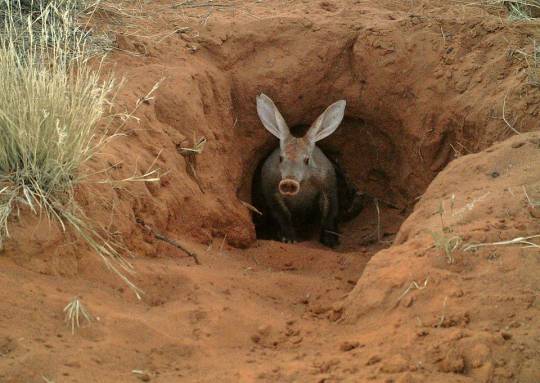
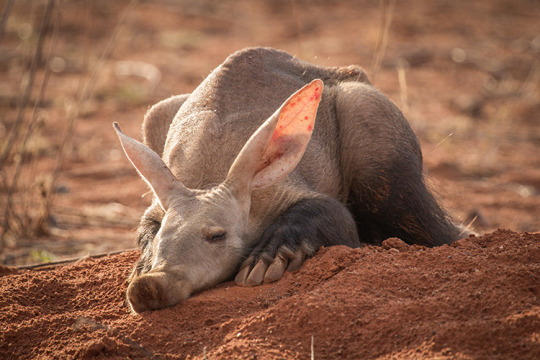

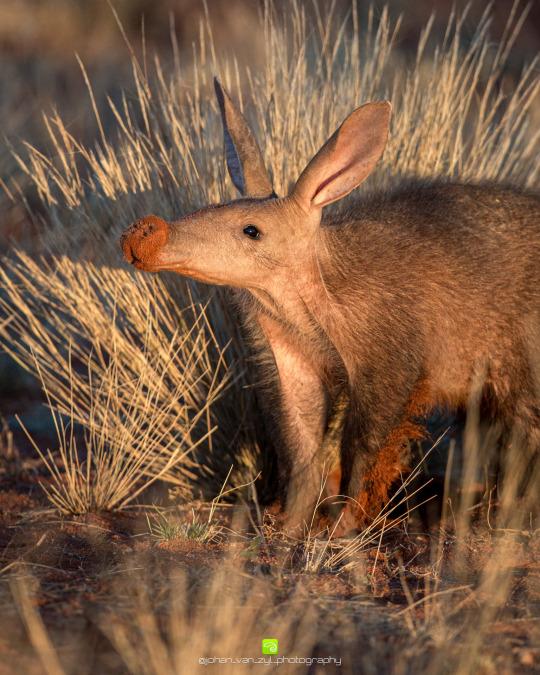
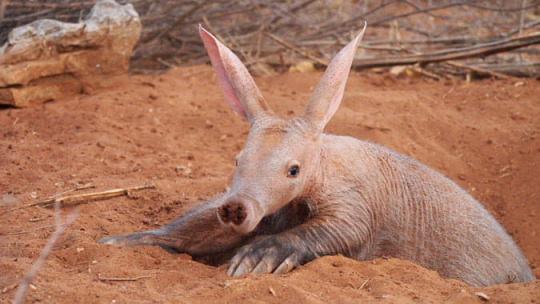
Earth angels who tap termite mounds and burrow homes for all of Africa's ground dwelling creatures.
138 notes
·
View notes
Text
Taxonomy Tournament: Mammals
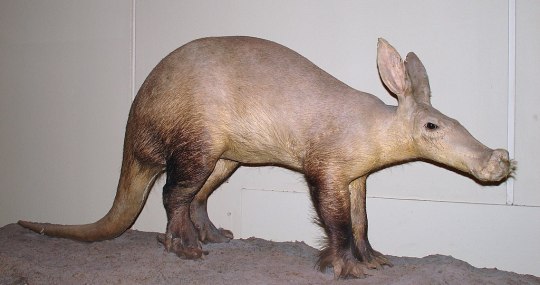
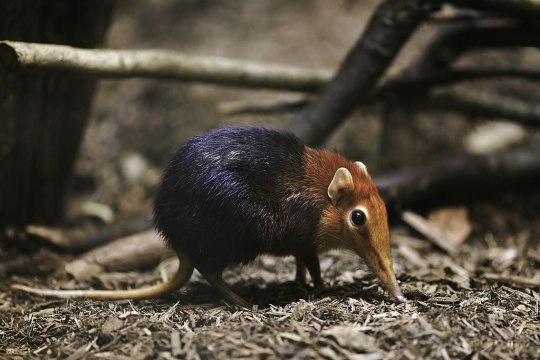
Tubulidentata. This order is made up of aardvarks, medium-sized mammals with long snouts that feed on ants and termites.
Afroinsectivora. This order contains small mammals that eat insects, such as the tenrec, golden mole, and the elephant shrew, which is more closely related to elephants than to actual shrews.
#animals#biology#polls#poll tournament#zoology#aardvarks#mammals#tetrapods#elephant shrews#Tubulidentata#Afroinsectivora#0x30v0xcf#animal tournament#Animal Tournament Round 1
34 notes
·
View notes
Text
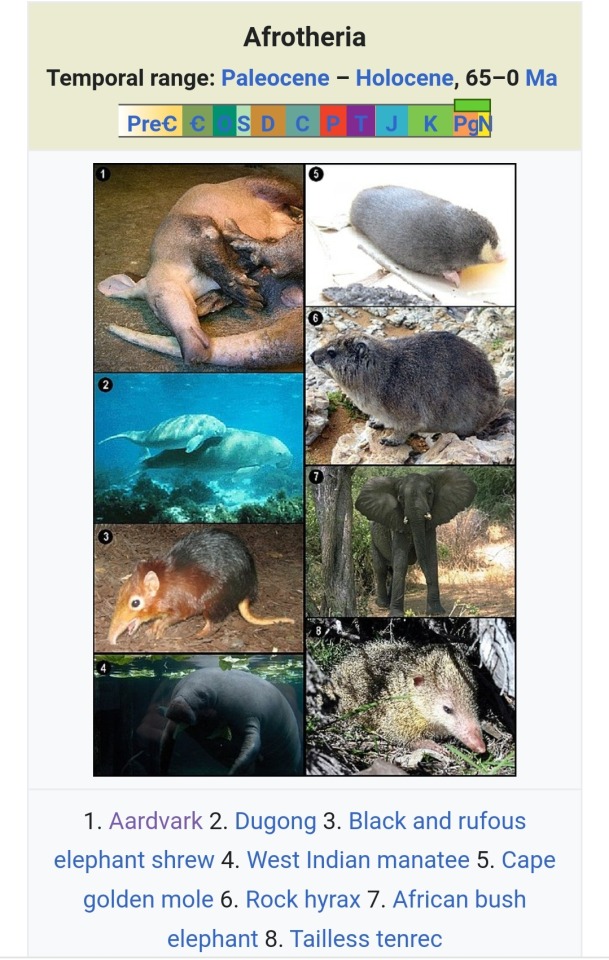
Shout out to Afrotheria, a whole clade of animals that must've mocked God for old-timey white people.
#animals#afrotheria#tubulidentata#aardvark#tenrec#hyrax#elephant#elephant shrew#dugong#manitee#Orycteropodidae#Orycteropus afer#critters#possumcollege#beasties
33 notes
·
View notes
Text
It's #NationalAardvarkWeek! Besides being one of my favorite mammals, it's also the most evolutionarily distinct one (more on that below). Stay tuned for more aardvark art and info all week long! 😎 #AardvarksAareAawesome
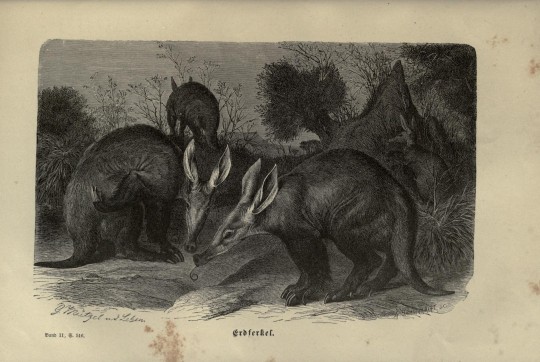
"Erdferkel," Plate 14 in Brehms thierleben, allgemeine kunde des thierreichs, 1876-9. Biodiversity Heritage Library.
#DYK the Aardvark (Orycteropus afer) is the only living representative of an entire ORDER of mammals, Tubulidentata? This helped it score as the #1 most evolutionarily distinctive (ED) mammal on ZSL's EDGE of Existence list:
[FYI the only other mammal order with a single living member is Microbiotheria, represented by the Monito del Monte (Dromiciops gliroides) - however they have more living relatives one step out in superorder Australidelphia than the Aardvark does in the Afrotheria.]
#aardvark#mammals#mammalogy#zoology#Tubulidentata#Microbiotheria#Monito del Monte#Australidelphia#Afrotheria#ZSL#EDGE of Existence#evolutionarily distinctive#illustration#book illustration#European art#German art#19th century art#lithograph#print#National Aardvark Week#Aardvarks Aare Aawesome#animals in art
3 notes
·
View notes
Text
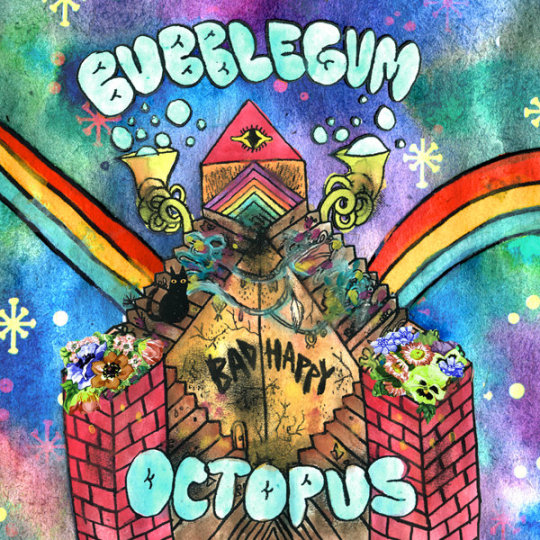
Tracklist:
SpazzPop Forever!!!!!~ • 888 Days Meow Fast • Sleep Void • Floor of Worlds • Tubulidentata • Goodbye Light (God's Fake Laser) • Betrayal is okay. • We ARE Sick • Shovel Piledriver • Metallic Sheep Nap • Feeler than I'm old • Beautiful Little Towne • Loud Noise In My Room • Time Zone Proclivity • Resting in the valley forever
Spotify ♪ Bandcamp ♪ YouTube
#hyltta-polls#polls#artist: bubblegum octopus#language: english#decade: 2010s#Cybergrind#Bitpop#Nintendocore#Experimental#Breakcore#Speedcore#Chiptune#Grindcore
11 notes
·
View notes
Note
Starting to suspect Tubulidentata teeth are just tusks but for molars instead of canines. Do you think the capacity to make ivory-ish teeth (full of dentine and rootless) is an ancestral Afrotheria trait?
The structure of aardvark teeth, being numerous parallel columns of dentine bound together by cementum, is unlike those of any synapsid tusk. I'd sooner consider aardvark molars to be a novel innovation. Afrotherian teeth are just really weird; Arsinoitherium has a distinctive radial structure to its enamel, and if desmostylians are in that clade, they have extremely thick enamel forming a collar around each cusp.
11 notes
·
View notes
Note
What is the only surviving animal in the order Tubulidentata?
aarvdark
11 notes
·
View notes
Text
Artiodactyla mods for zoo tycoon 2 download

#Artiodactyla mods for zoo tycoon 2 download skin
An aardvark’s powerful claws are adapted to breaking open hard clay termite nests. It is its diet that caused the aardvark to evolve a form and habits similar to anteaters and other ant and termite-eating mammals. In fact, the aardwolf (which is not related to the aardvark) usually lives in aardvark burrows. Their abandoned burrows provide homes for many other animals, including large and small mammal predators, porcupines, some birds, and even crocodiles and pythons. Numerous aardvarks may burrow in same vicinity. Aardvarks reportedly occupy termite nest as temporary shelters (perhaps when they’ve been flooded out of their burrows!). (Aardvarks generally enter and exit headfirst.)Īardvarks that burrow in areas prone to seasonal flooding are sometimes forced to evacuate their burrows. An aardvark tunnel ends in a chamber large enough for the animal to turn in. Aardvarks make homes by excavating burrows that are about ten feet (3 meters) long. It ranges from southernmost Africa (the Cape of Good Hope) to southern Egypt, but is generally widespread in suitable habitat south of the Sahara Desert. The aardvark is today restricted to Africa. Sometimes, an aardvark may be seen sunning itself at its burrow entrance in the early morning. They usually spend the day in their burrows, curled up in a tight circle, the hind limbs and tail protecting the snout. But their eyesight seems to be poor they frequently crash into trees, bushes, and other obstructions when running.Īardvarks aren’t commonly seen because they’re mostly nocturnal. They have acute hearing, and flee for their burrows at the least hint of danger. Like most animals, aardvarks prefer to simply avoid predators. A desperate aardvark may even roll on its back, slashing with all four feet. It may strike with its tail or shoulders or rear on its hind legs and slash with its clawed forefeet. What about that third choice? If cornered, an aardvark fights back. An aardvark digging in soft earth can beat several people armed with shovels! Its powerful forefeet can even tear through hard, sun-baked ground. The first two are run or dig! The aardvark isn’t known as a fast runner, though it is said to escape with surprising speed. When pursued by enemies, aardvarks have three choices. There are four toes on each front foot, five on each hind foot. Short, stocky legs end in toes bearing long, straight, strong, and blunt claws. Low forequarters add to aardvark’s hump-backed appearance. Hair on the legs is often darker than that on the body. It is scantily covered with bristly hair varying from dull brownish-gray to dull yellowish-gray.
#Artiodactyla mods for zoo tycoon 2 download skin
Each tooth is made of numerous tubular pulp cavities surrounded by hexagonal prisms of dentine.Īardvarks are covered with thick pinkish-gray skin that protects them from insect bites and may even save them from predators. The name derives from the aardvark’s cheek teeth, which resemble flat-crowned columns. Scientists placed the aardvark in its own order, Tubulidentata, which means tubule toothed. Adults average 110-150 pounds (50-70 kg), but may weigh as much as 180 pounds (82 kg). It grows up to seven-and-a-half feet (2.3 meters) long, including its rat-like though thick and powerful tail. The aardvark is an odd-looking beast, resembling a giant, hump-backed rat with the head of an anteater, the snout of a pig, and the ears of a rabbit.

0 notes
Text

Aardvark (Oryctaropus afer)
Photo by Johan Van Zyl
#aardvark#oryctaropus afer#oryctaropus#orycteropodidae#tubulidentata#afrotheria#atlantogenata#eutheria#mammalia#tetrapoda#vertebrata#chordata
156 notes
·
View notes
Photo
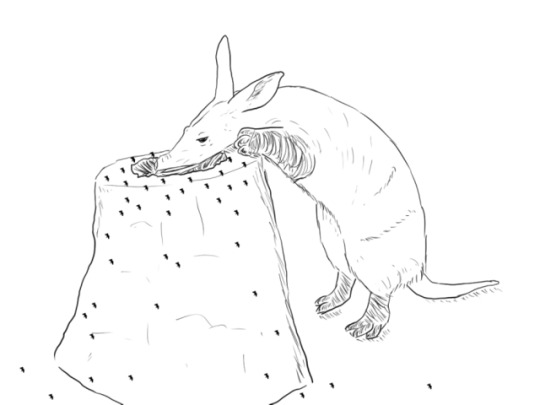
SSS 50 (Audacious Aardvark)
Surprisingly, these insectivores aren't even closely related to the South American Anteater, despite sharing many similarities... (you can thank convergent evolution for that)
As for why I described this aardvark as audacious?
Even though their tough skin makes them resistant to ant bites, there have been reports suggesting they avoid eating African Driver Ants and Red Ants, the latter also known as Fire Ants.
#SouthSummerSketches#digital drawing#beginner artist#animal#insectivore#tubulidentata#anteater#african ant bear#convergent evolution
0 notes
Photo
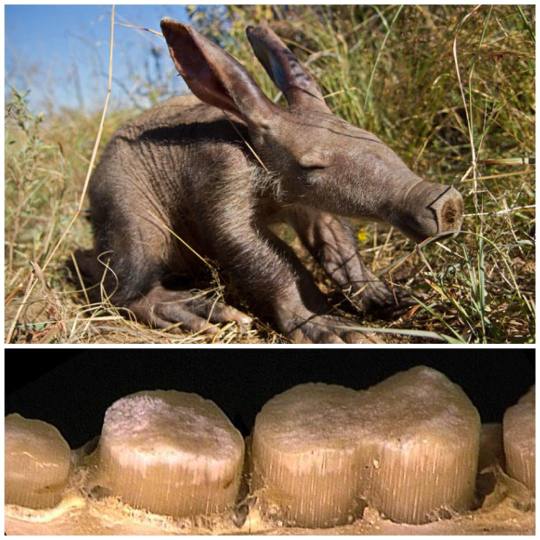
A baby Aardvark and the strange teeth of their order “Tubulidentata”. Aardvarks are the sole living member of their mammalian order which includes another 15 or so creatures. They evolved shortly after the extinction of the dinosaurs and are evidently named for their strange tube like teeth.
Each tooth is made of thin, hexagonal, parallel tubes that have their own pulp canals. The teeth have no enamel coating and they grow constantly throughout their lives, being worn down by usage. They also only have teeth at the back of their jaws, which are molars. Oddly, baby Aardvarks grow regular mammalian Incisors and Canines at the front of the jaw that fall out during adolescence and never grow back.
The name Aardvark means “Earth Pig” in Afrikaans and they are commonly thought to be Anteaters due to their similar appearance and the fact that they can consume up to 50,000 ants a day. But in reality, they aren’t closely related to Anteaters at all, but share a close lineage with Elephants.
Aardvarks almost exclusively eat ants and termites, but they also eat a fruit that they share a symbiotic relationship with, known as the Aardvark Cucumber. The animal defecates the seeds near their burrows into the loose, rich soil allowing the seeds to grow much faster compared with normal soil. Also, the specific environment within the intestines of the animal increases the fertility, and thus the probability of the survival of the seeds.
#aardvark#animals#teeth#strange animals#baby animals#science#chemistry#math#engineering#physics#biology#zoology#baby#africa#elephants#dinosaurs#animal facts#podcast#science podcast#til#interesing#earth#nature
1K notes
·
View notes
Text
Monotremes (Monotremata) are the only mammals (extinct or extant) that do not give live birth. Based on this information and this tree, what type of group are mammals that give live birth?
Monotremes (Monotremata) are the only mammals (extinct or extant) that do not give live birth. Based on this information and this tree, what type of group are mammals that give live birth?
Monotremata Marsupialia Assume the mammal cladogram on the right depicts accurate evolutionary relationships. While there is no absolute time on this cladogram, there is relative time running from left to right (right is more recent). Answer the following questions about this tree. Afrosoricida – Macroscelidea Tubulidentata Proboscidea Hyracoidea Sirenia Xenarthra Dermoptera 1. Monotremes…

View On WordPress
3 notes
·
View notes
Photo
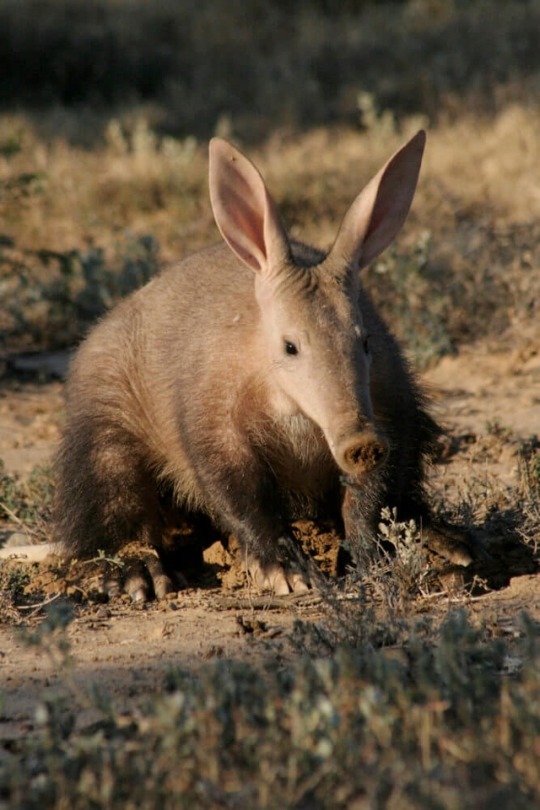
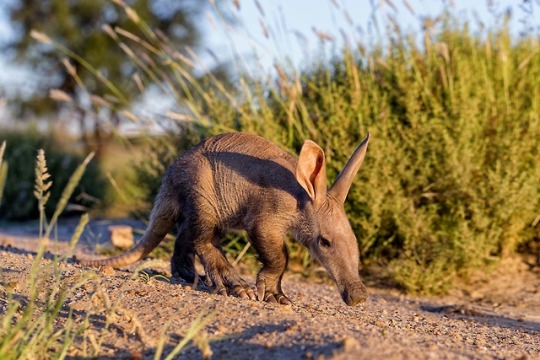




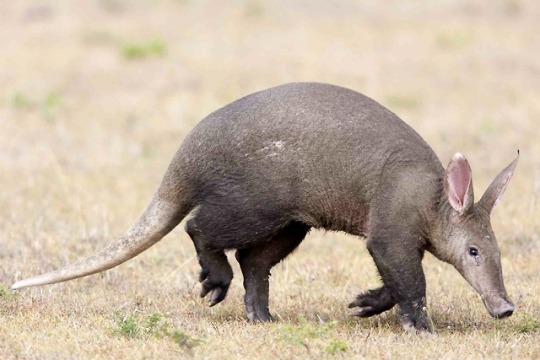
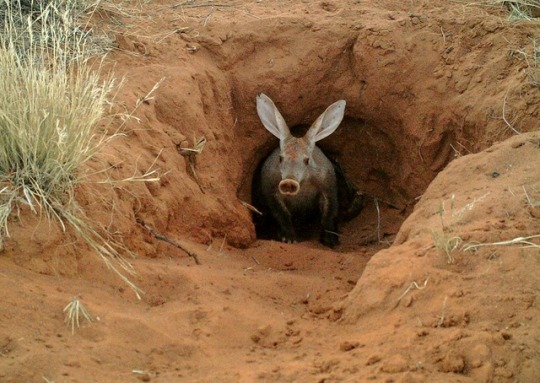


AARDVARK (/ˈɑːrdvɑːrk/ ARD-vark; Orycteropus afer)
The aardvark (/ˈɑːrdvɑːrk/ ARD-vark; Orycteropus afer) is a medium-sized, burrowing, nocturnal mammal native to Africa. It is the only living species of the order Tubulidentata, although other prehistoric species and genera of Tubulidentata are known.
WIKIPEDIA
156 notes
·
View notes